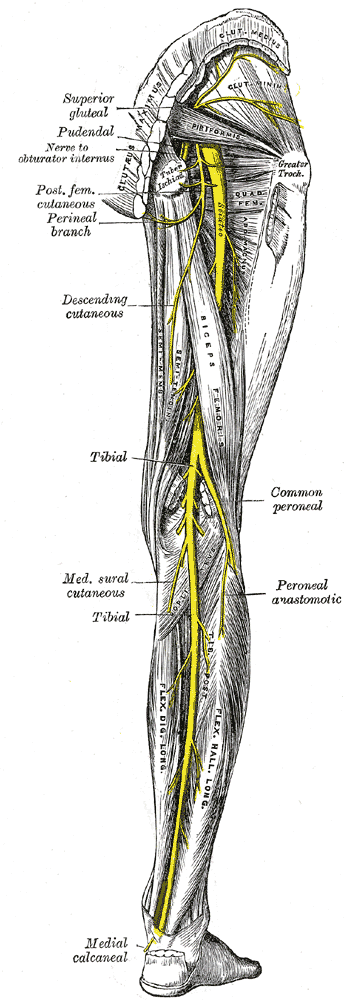Where does Sciatica come from?
 The sciatic nerve is the longest and thickest nerve in your body. It starts in the lowest part of your back and it branches down all the way to the tips of your toes. This nerve carries useful information from the legs to the brain, including pain signals, joint position, touch and sensation. It also sends signals from the brain to the legs, allowing muscle contraction and movement.
The sciatic nerve is the longest and thickest nerve in your body. It starts in the lowest part of your back and it branches down all the way to the tips of your toes. This nerve carries useful information from the legs to the brain, including pain signals, joint position, touch and sensation. It also sends signals from the brain to the legs, allowing muscle contraction and movement.
It’s no wonder that when something goes wrong with the sciatic nerve, it makes people miserable. The term ‘sciatica’ describes the pinching or irritation of this nerve that leads to leg weakness, pain, numbness and/or tingling down the back of the leg. Sometimes these symptoms occur together and sometimes sciatica can result in just one of these troubling issues. Depending on how much the nerve is being compressed, these problems can be experienced continuously from buttock to foot, or sometimes only in specific areas such as the calves and foot.
There are several things that can cause sciatica. The most common of these include:
- Degenerative Disc Disease (DDD)
- Lumbar Disc Herniation (also known as bulging discs or slipped discs)
- Spondylolisthesis (also known as anteriolisthesis)
- Piriformis Syndrome
When should you get help for sciatic pain?
Pain from sciatica can be quite severe, so most people will see a doctor for help. Simple x-ray testing can help to determine if there is a bony cause of the pain, such as Degenerative Disc Disease or Spondylolisthesis. An MRI is often needed to see disc herniation. If you are experiencing an inability to control bowel or bladder function with your sciatic pain, there may be severe pinching of the spinal cord and immediate medical attention is required. In the majority of cases, there is no emergency and your doctor can send you for conservative treatment such as physiotherapy. Please click on the appropriate links above to get more details about the conditions that cause sciatica and their possible treatments.
